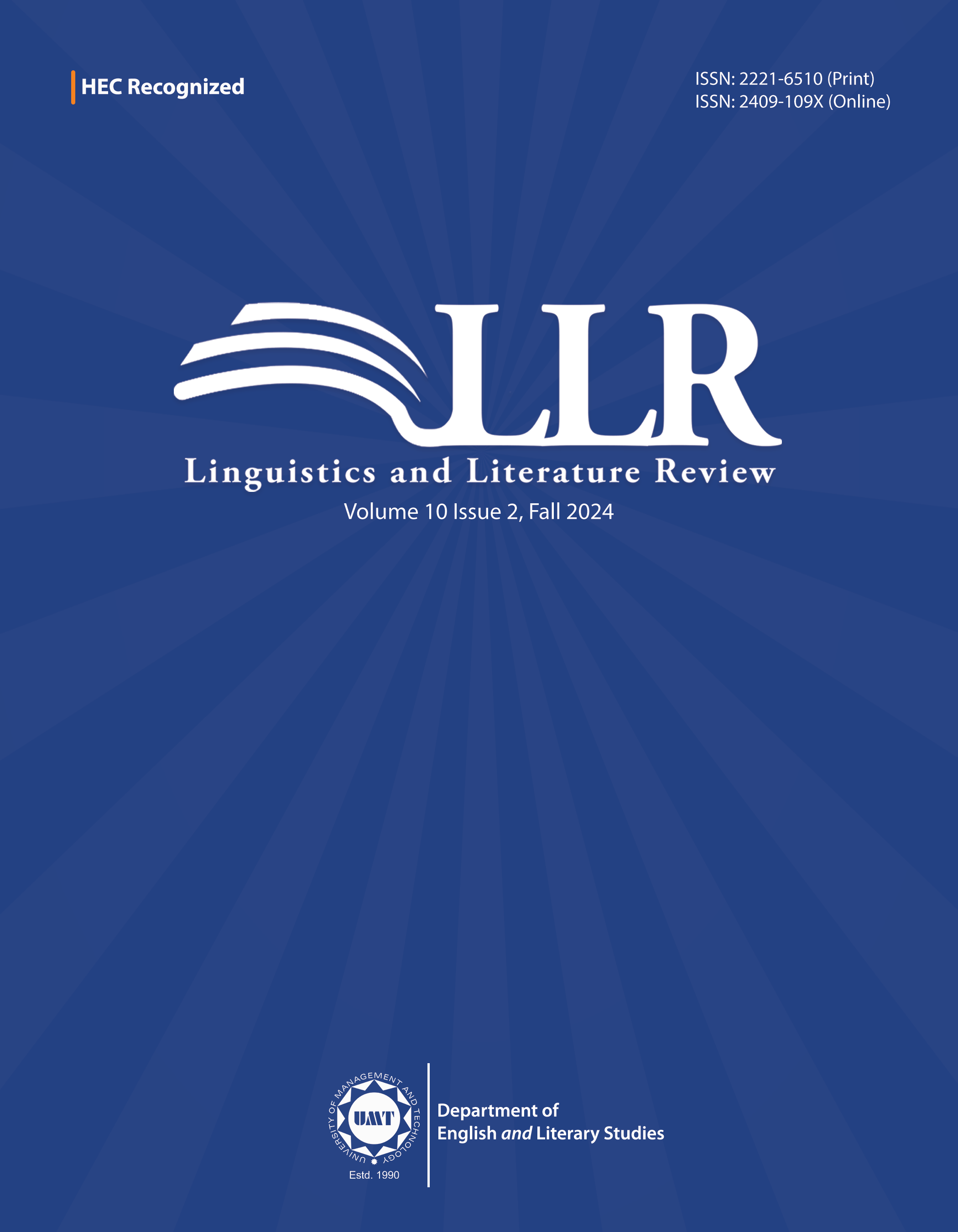Ambivalent Temporalities of Nation-Space: A Study of Mohsin Hamid’s Moth Smoke and Arundhati Roy’s The God of Small Things
Abstract
 Abstract Views: 0
Abstract Views: 0
Following Bhabha’s theorization on the ambivalent temporalities of nation-space, this research seeks to analyze how the mutual tension between the pedagogical and the performative temporalities of nationalist representation plays out in Arundhati Roy’s The God of Small Things (1997) and Mohsin Hamid’s Moth Smoke (2000). This article explores how the nation-space narrated by Roy and Hamid is marked by a tussle between the pedagogical and the performative on the lines Bhabha describes it in his seminal essay, ‘DissemiNation: Time, narrative and the margins of the modern nation’. The novels display how the narration of the nation engages in a ‘double movement’ through a harking back to the past while simultaneously being progressive and forward-looking. These double movements cause ambivalent temporalities and produce a disruptive anterior where a deterministic past/history comes head-to-head with the daily performance of the people. The invasive presence of the past quashes the emancipatory maneuvers of the characters who try to chart a performative of their own in contravention of the traditions. In both the novels, the pedagogical pitted against the performance enforces its impersonal and transhistorical outreach by trying to quash what it sees as the unauthorized performance of the people. The nation-space, therefore, remains ambivalent and split between the myths of the past and the realities of the present.
Downloads
References
.
Copyright (c) 2024 Noor Ul Qamar Qasmi

This work is licensed under a Creative Commons Attribution 4.0 International License.

This work is licensed under a Creative Commons Attribution 4.0 International License. Authors retain copyright and grant the journal right of first publication with the work simultaneously licensed under a Creative Commons Attribution (CC-BY) 4.0 License that allows others to share the work with an acknowledgment of the work’s authorship and initial publication in this journal.







